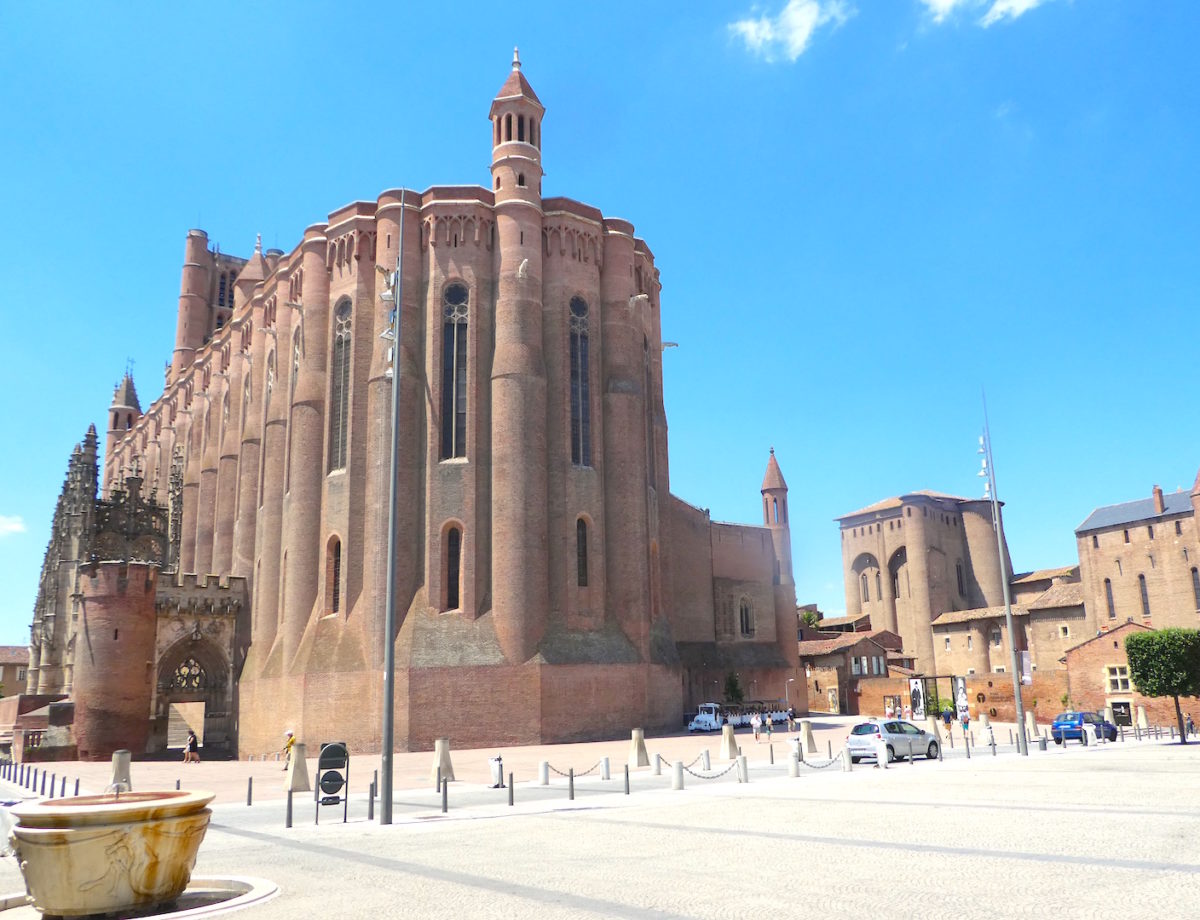Roy had been hankering to visit both Albi and the smaller town of Gaillac since he came across them in a series of novels by Peter May. (See my previous post on Cahors.) So, daughter Wendy being down with us for several days from her home in St Malo, Brittany, we three inserted ourselves into the Twingo and headed first for Albi, 140km away from Moissac.
Though they don’ñt look particularly red here, Albi is known as la ville rouge because of the famously red brick buildings in its historical centre – particularly Albi Cathedral (the Cathedral Basilica of Saint Cecilia). It is said by some to be the the biggest brick building in the world.

Fortress-like, this imposing Gothic giant was built in the 13th century, just after the cruel and violent suppression of the so-called Albigensian Heresy. (The cathedral is on the Unesco List of World Heritage sites.) Its vast interior owes its incredible ornateness to various influences over hundreds of years, including Catalan, Renaissance and Flemish styles.

We admired the lapis lazuli blue tones glowing from high, vaulted arches; they tell the story of the martyr Saint Cecilia, now patron saint of musicians.

Complex frescoes display the torments of hell, complete with devils, fire, pitchforks, and cauldrons boiling the damned. Others show the various layers of eternity: hell, purgatory (I think), and then a disappointingly bland-looking heaven featuring hymn books and haloes.
On the streets
Lunch was beer and salads at Le Solelhou, to the accompanying hammering of artisans restoring the ancient cobblestones just metres away.

I wanted to take the petit train, below – but Wendy wasn’t keen.


Musée Toulouse-Lautrec
On such a blistering day, chilled medieval interiors are a welcome relief.

Housed in La Palais de la Berbie – a 13th-century episcopal residence – Musée Toulouse-Lautrec (€9 entry) has a large and interesting collection of works by the Post-Impressionist painter Henri Toulouse-Lautrec, who was born in Albi.

The long way home, via Gaillac
Roy having instructed the Garmin to avoid motorways at all costs, our Twingo was taking somewhat longer than expected to get us around. So, though we stopped in Gaillac on the way home, we didn’t linger, other than to buy a couple of bottles of local drops* from a cave in the ville centrale, plus a tasty-looking loaf from the neighbouring boulangerie.
*Unfortunately, there was none of the local vin mousseux that Roy was after. According to author Peter May in his Enzo McLeod novel The Critic, the making of this bubbly was “a secret stolen centuries before by a monk called Dom Perignon, and made famous in another place on the far side of France”. Hah!

















Ha ha, no Dom Perignon! Loved the cathedral. Weather looks good.